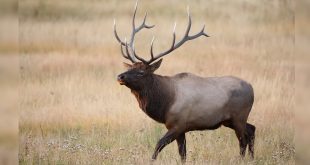
There’s something special about returning to your old stomping grounds on a crisp October morning, elk bugles bouncing off the hills you once called home. For many who grew up in Wyoming, the desire to come back and hunt familiar ground never quite goes away. It’s not just an element of nostalgia, either. It’s been reported that Wyoming exports nearly 70% of it’s youth who have these memories.
That’s why a new proposal being floated in the Wyoming Legislature has started a conversation last week at the TRW Committee Meeting in Dubois.
A “nonresident native” tag program is being proposed, one that would grant a pathway for former Wyomingites to return and hunt on more reasonable terms. These wouldn’t be general nonresident tags open to the world. They’d be reserved for those with legitimate ties to the Cowboy State.
On the surface, it’s a heartwarming idea. But for those of us who think deeply about wildlife management, hunting opportunity, and the places that keep us living in Wyoming, it deserves a hard look.
Letting Emotion Override Conservation
Wyoming caps nonresident tags at about 16% of total draw tags for elk, and 20% for pronghorn and deer with residents getting priority on most general seasons. This framework keeps pressure in check and maintains a dang good hunting experience for the half-million people who choose to have wind-bent doors and live in Wyoming year-round.
It was not clear whether the program would just encourage better pricing for nonresident natives or if it would add new licenses for them. There is a world where more licenses could be manageable for a species like elk where opportunities are increasing, or it could be an awkward fight to integrate for animals like deer and pronghorn where.
Even a few hundred extra hunters in high-demand general areas may chip away at the very quality hunting experience that makes Wyoming so special in the first place.
In the conversations at TRW, Montana’s programs, like their “Come Home to Hunt” and “Nonresident Native” licenses, were used as inspiration, but not suggested to be an exact framework. That means Wyoming has a chance to make it conservation-minded, like cheaper or more easily accessible reduced-price tags and maybe not full-priced ones.
Make It a Management Tool, Not a Giveaway
If Wyoming moves forward with this program, it should also be done with the resource at the center of the conversation. That means acknowledging where it may:
- Increase point creep on nonresidents and/or pressure on residents – no matter if tags are just cheaper or set-aside for nonresident natives
- May require harvest reporting and unit-level tracking so the system is not abused
- Tying the program to population objectives or using it to direct pressure away from over-hunted areas
These tags could even be used as a tool to incentivize participation in antlerless or late-season hunts that help meet herd management goals. But only if the program is built with purpose and is not just a feel good initiative.
The Economic Argument: Real, but Complex
There’s an economic argument in play here too. Nonresident hunters are a massive contributor to Wyoming’s rural economies. They fill gas tanks, motel rooms, and diner booths. But nonresident natives (those coming back to stay with family, who already know the land and likely bring their own gear) may not deliver the same spending punch as traditional nonresidents.
Still, these hunters represent long-term value. A former Wyomingite who reconnects with his roots on a November deer hunt might bring his kids next year. Maybe they invest in land, volunteer for habitat work, or return for other seasons. I agree that deeper history, the kind built from years on the landscape, not the internet, is how you build a lasting conservation ethic.
Bringing Them Home, Carefully
Wyoming’s hunting heritage is built on balance of residents and nonresidents; a balance that feels like it’s been teetering in today’s conversations that have led to initiatives like 90/10 for the Big 5; or the new nonresident elk regions.
A nonresident native tag program, done right, could be a small but meaningful way to bring folks back who have real history and family in the Cowboy State. But if done hastily, it risks rocking the boat in a state that already seems to be taking on water from all sides of wildlife management conversations.
What say you? Should Wyoming bring ‘em home with additional pricing or draw incentives?
 Eastmans' Official Blog | Mule Deer, Antelope, Elk Hunting and Bowhunting Magazine | Eastmans' Hunting Journals
Eastmans' Official Blog | Mule Deer, Antelope, Elk Hunting and Bowhunting Magazine | Eastmans' Hunting Journals





No! It’s not like the G&F is having a hard time selling tags. The current demand far exceeds the supply. If you take the tags from the non resident pool then the G&F will have to make up the lost revenue and if you take the tags from the resident pool then that hurts resident opportunity which a lot of us choose to live here for that opportunity. If you choose to leave you’re a non-resident simple as that.
Whit is right, if you move out of Wyoming you ARE a non-resident. Easy-Peasy.
Just say no. Our hunting is getting smaller and smaller as it is. Hard no.
I’ve hunted Wyoming 23 times since 1978 as a non-resident. Still buy preference points but at 75 years old I’m probably going to look at other states to hunt if you further restrict me. Really, wish you’d give preference to old and loyal to the state preference. Really not sure how long I’ll be able to love hunting my favorite state.